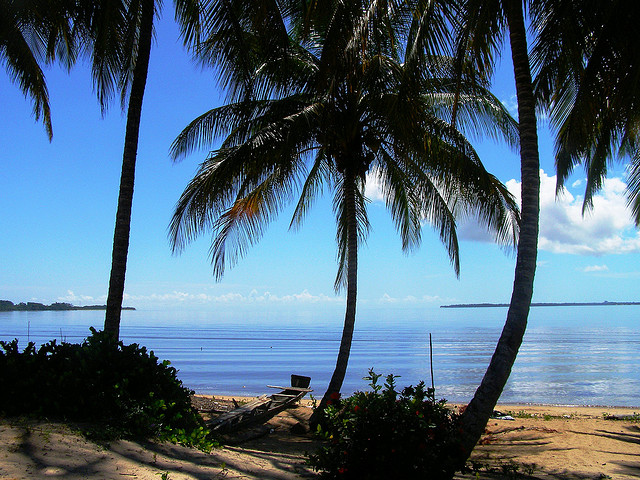unveiling surinames cultural heritage a journey through its nature reserves
Paramaribo is the capital and largest city of the Republic of Suriname, located on the northern coast of South America. It is situated at the confluence of the Suriname River and the Commewijne River, making it a strategic and important port city for the country. Paramaribo is a melting pot of cultures, with a rich history that is reflected in its diverse architecture, cuisine, and traditions.
History:
Paramaribo was founded by the British in the early 17th century and was originally named Fort Willoughby. However, the city changed hands several times between the British and the Dutch, and it was finally ceded to the Dutch in 1667 under the Treaty of Breda. The Dutch influence is still evident in the city's architecture and urban layout.
Architecture and UNESCO Heritage:
Paramaribo's historic city center is renowned for its unique blend of architectural styles, representing a mix of Dutch, British, French, and Spanish influences. The city boasts an impressive collection of well-preserved wooden buildings, some dating back to the 18th century. Due to its cultural significance and historical value, Paramaribo's inner city was designated a UNESCO World Heritage Site in 2002.
Suriname, located on the northeastern coast of South America, is a treasure trove of natural beauty and cultural heritage. From its diverse ecosystems to its rich history, Suriname offers a unique blend of attractions for travelers. Among these are the Galibi Nature Reserve and the Central Suriname Nature Reserve, both of which are significant for their biodiversity and conservation efforts. Here's a brief overview of these natural reserves and their importance in preserving Suriname's cultural and natural heritage.
Galibi Nature Reserve
Located near the mouth of the Marowijne River, the Galibi Nature Reserve is best known for its sea turtles. Four species of sea turtles, including the critically endangered leatherback, come to the beaches of Galibi to lay their eggs. The reserve is also home to a variety of bird species, making it a birdwatcher's paradise.
Cultural Significance
The indigenous Carib and Arawak communities live in the vicinity of the Galibi Nature Reserve. These communities have a deep-rooted relationship with the land and sea, relying on traditional fishing and farming methods. Their cultural practices and folklore are closely tied to the natural environment, making the reserve not just a biodiversity hotspot but also a cultural heritage site.The reserve is located in the traditional territories of the Trio and Wayana peoples. These indigenous communities have lived in harmony with the forest for generations, utilizing its resources sustainably. The reserve is not just a sanctuary for wildlife but also a living testament to the sustainable lifestyle and traditional wisdom of its indigenous inhabitants.
Central Suriname Nature Reserve
Covering approximately 16,000 square kilometers, the Central Suriname Nature Reserve is one of the largest protected areas of rainforest in the world. It is home to a wide range of flora and fauna, including jaguars, giant armadillos, and harpy eagles.
Unveiling Suriname's Cultural Heritage
Both the Galibi and Central Suriname Nature Reserves are integral to Suriname's cultural and natural heritage. They serve as living museums where one can witness the harmonious coexistence of humans and nature. By visiting these reserves, travelers can gain a deeper understanding of Suriname's biodiversity, as well as the cultural practices and traditional knowledge that have been passed down through generations.
In summary, Suriname's natural reserves are not just areas of ecological importance; they are also vital for the preservation of the country's rich cultural heritage. Whether you're an adventurer, a nature lover, or someone interested in indigenous cultures, these reserves offer a unique and enriching experience.
Waterfront and Landmarks:
One of the highlights of Paramaribo is its picturesque waterfront along the Suriname River. The Waterkant, as it is known, is a popular spot for locals and visitors alike, offering stunning views, leisurely walks, and vibrant street food markets. Several landmarks adorn the city, such as the Presidential Palace, Independence Square, and the striking Central Market, where you can find a wide array of local produce, crafts, and souvenirs.
Cultural Diversity:
Suriname, and consequently Paramaribo, is known for its cultural diversity. The population consists of various ethnic groups, including Creoles, Hindustanis, Javanese, Maroons, and Chinese, among others. This multicultural influence is evident in the city's cuisine, festivals, and traditions, making Paramaribo a vibrant and enriching destination for those interested in experiencing different cultures.
Suriname River Tours:
Exploring the Suriname River is a must-do activity when visiting Paramaribo. There are various boat tours available, taking you along the river to explore the lush rainforests, wildlife, and traditional villages. Additionally, you can visit the old plantation estates along the Commewijne River, offering a glimpse into Suriname's colonial past.
Culinary Delights:
Paramaribo is a food lover's paradise, offering a delectable array of dishes influenced by its diverse cultural heritage. From traditional Creole dishes to Indian, Indonesian, and Chinese cuisines, the city boasts a rich tapestry of flavors. Don't miss the chance to try local favorites like roti, bakabana (fried plantains), and pom (a flavorful chicken and pomtajer casserole).
Friendly Locals:
One of the highlights of visiting Paramaribo is the warm and welcoming nature of the locals. Surinamese people are known for their hospitality and friendliness, making visitors feel right at home in this charming city.
Nature and Adventure:
While Paramaribo is a bustling urban center, it also serves as a gateway to Suriname's stunning natural beauty and adventurous activities. From pristine rainforests and wildlife-rich nature reserves to hiking and birdwatching opportunities, there is plenty for nature enthusiasts to explore.
In conclusion, Paramaribo, Suriname, is a captivating destination that offers a blend of history, culture, and natural beauty. With its UNESCO-listed historic center, cultural diversity, and warm hospitality, Paramaribo provides a unique and enriching experience for travelers seeking an off-the-beaten-path destination in South America. Whether you're interested in history, food, nature, or simply meeting friendly locals, Paramaribo has something to offer every traveler.


Leave a Reply
Your email address will not be published.